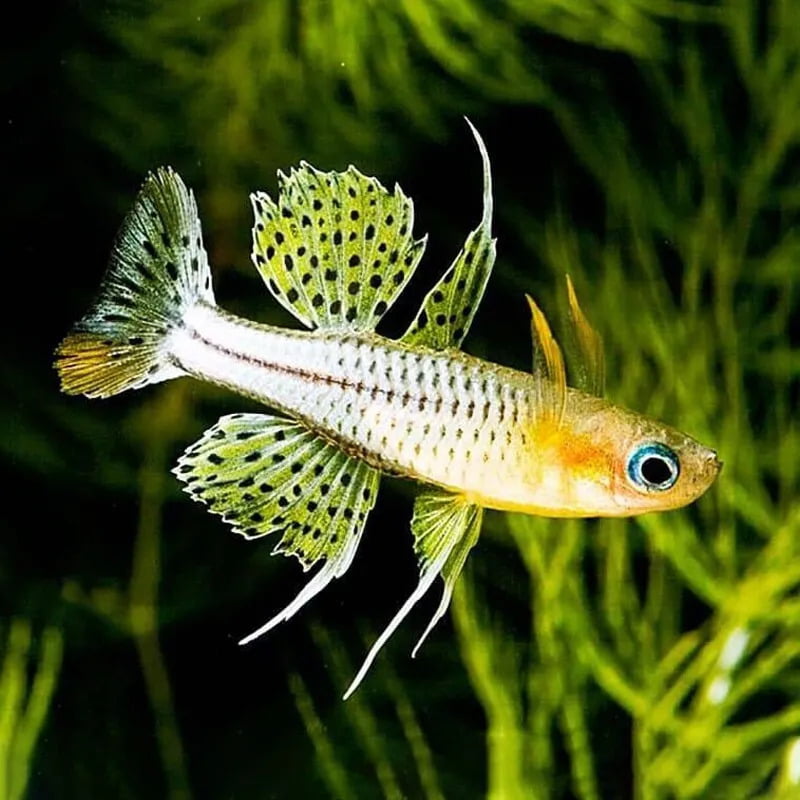
Spotted Blue Eye Rainbow
The Spotted Blue-Eye Rainbowfish, scientifically known as Pseudomugil gertrudae, is a small and attractive species of freshwater fish. Here are some key features and information about Pseudomugil gertrudae:
Appearance: Pseudomugil gertrudae is known for its vibrant colors and distinctive markings. The body is generally elongated and slender. The males often display bright blue and yellow colors, with distinct spots on their bodies. Females tend to be less colorful.
Size: Adult Spotted Blue-Eye Rainbowfish typically reaches a size of about 1.5 to 2 inches (3.8 to 5 centimeters).
Habitat: This species is native to Northern Australia and New Guinea, where it is found in freshwater streams, swamps, and still waters. They prefer habitats with dense vegetation and slow-moving waters.
Behavior: Spotted Blue-Eye Rainbowfish is peaceful and social. They are schooling fish, and keeping them in groups is recommended to promote their well-being and natural behaviors.
Diet: In the aquarium, they are generally omnivorous. They will accept high-quality flake or micro-pellet food. Additionally, they may benefit from live or frozen foods such as daphnia, brine shrimp, and small insects.
Tank Requirements: Provide a well-planted aquarium with open swimming spaces. They prefer slightly acidic to neutral water conditions with a temperature range of 72-78°F (22-26°C). Regular water changes and good filtration are important.
Compatibility: Spotted Blue-Eye Rainbowfish is peaceful and can be kept with other small, non-aggressive fish species. They are suitable for community aquariums with species that share similar water requirements.
Breeding: Breeding Spotted Blue-Eye Rainbowfish can be achieved in a well-maintained aquarium. Use fine-leaved plants or spawning mops for egg deposition. The eggs are adhesive and will attach to surfaces. Provide a separate breeding tank or remove the eggs to increase the chances of fry survival.
These fish are appreciated not only for their beauty but also for their active and social behavior. As with any fish species, it's important to research and understand the specific needs of Pseudomugil gertrudae to provide them with proper care in the aquarium



